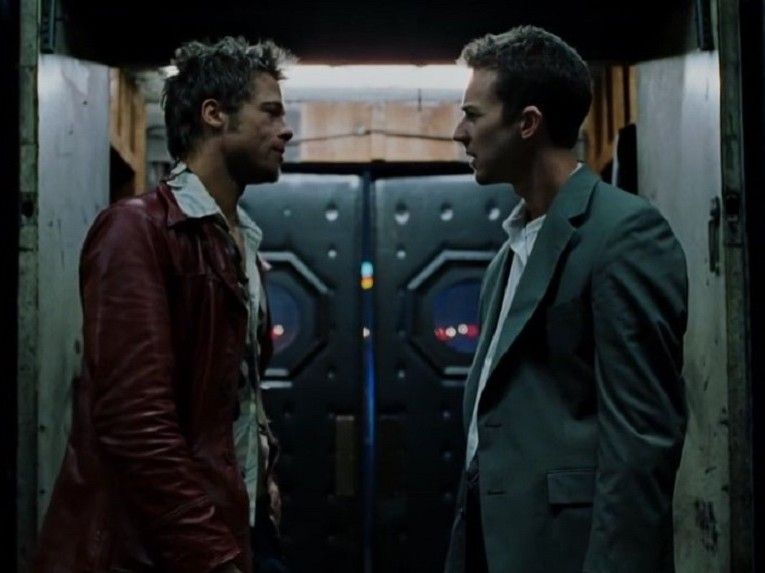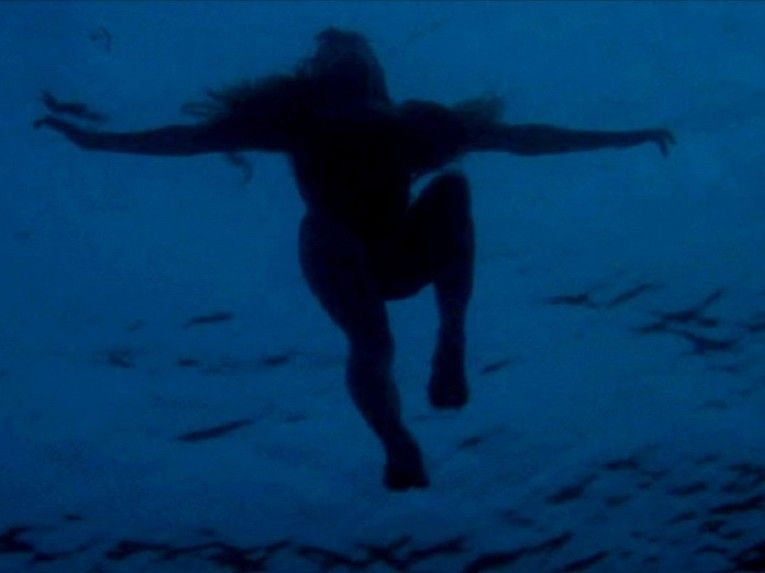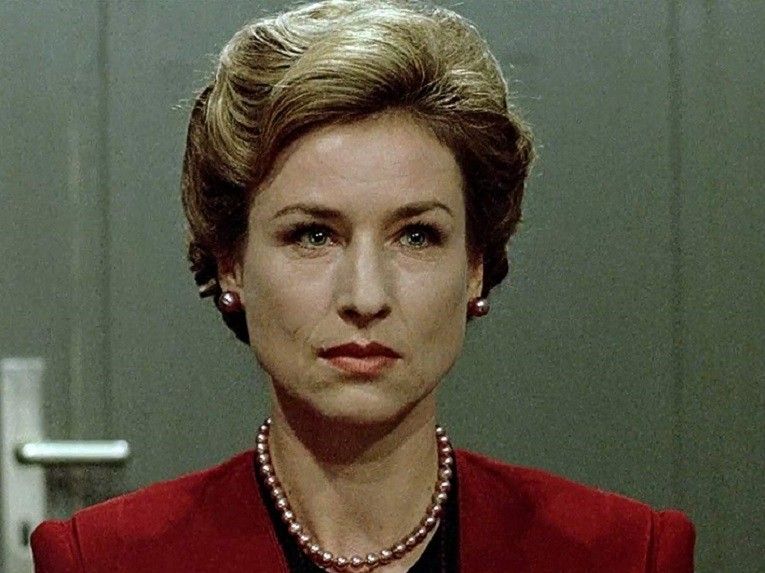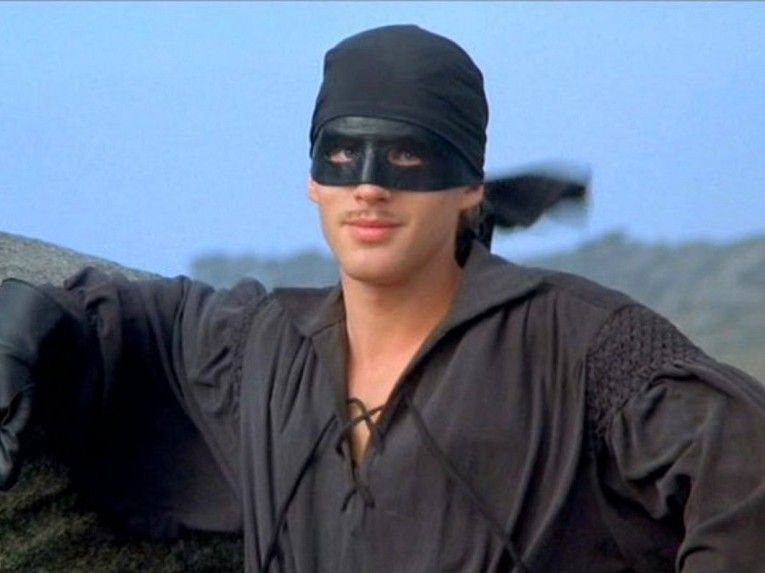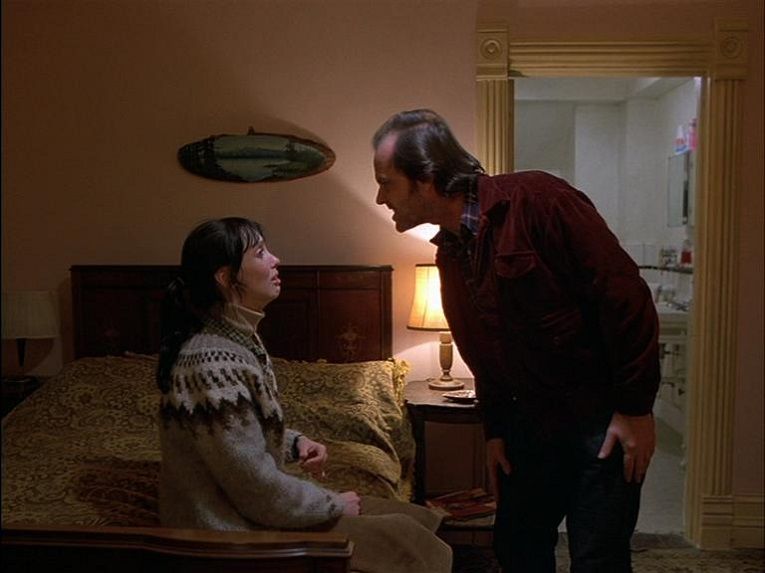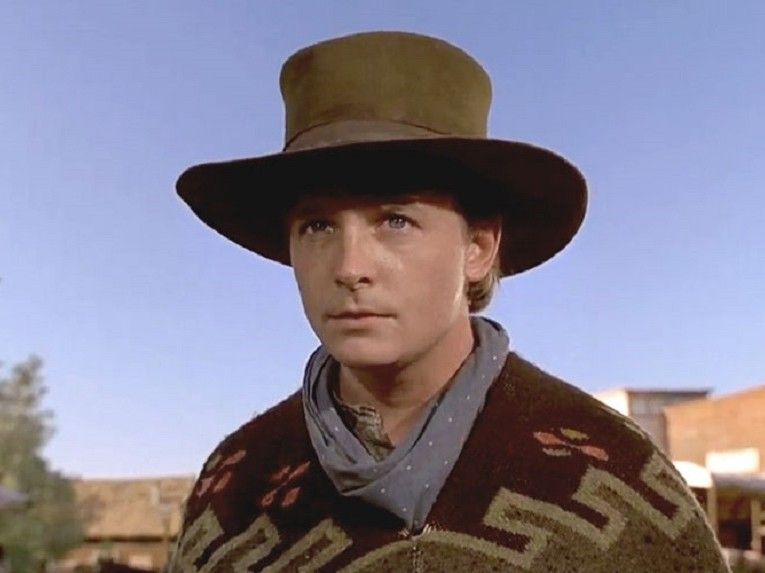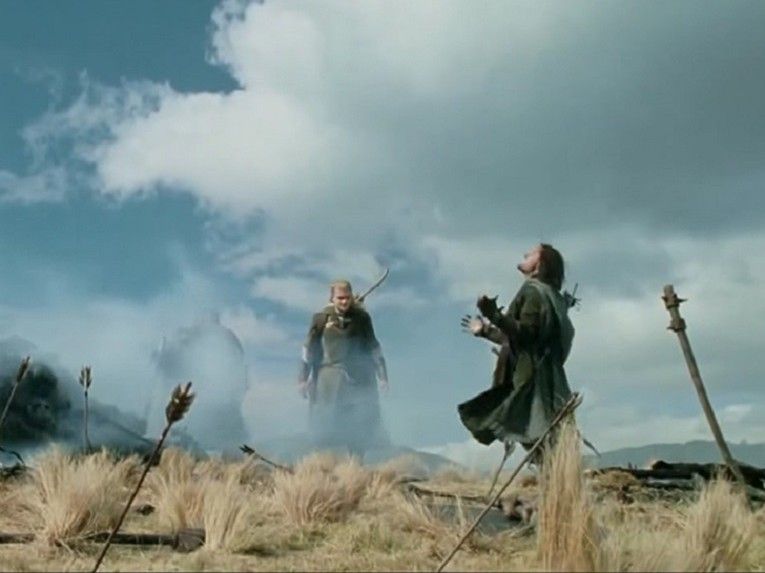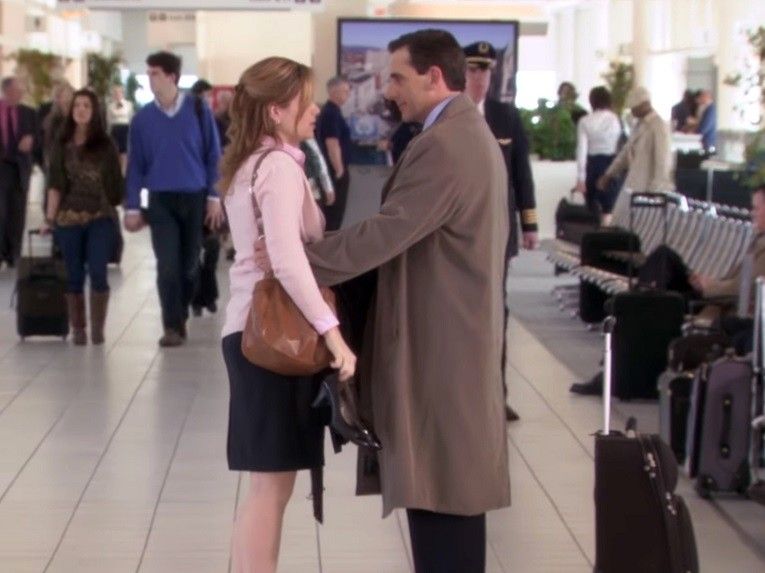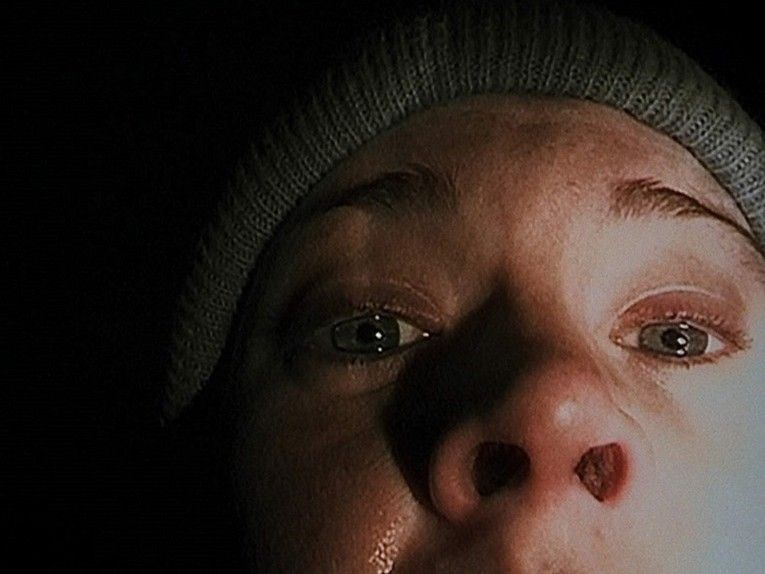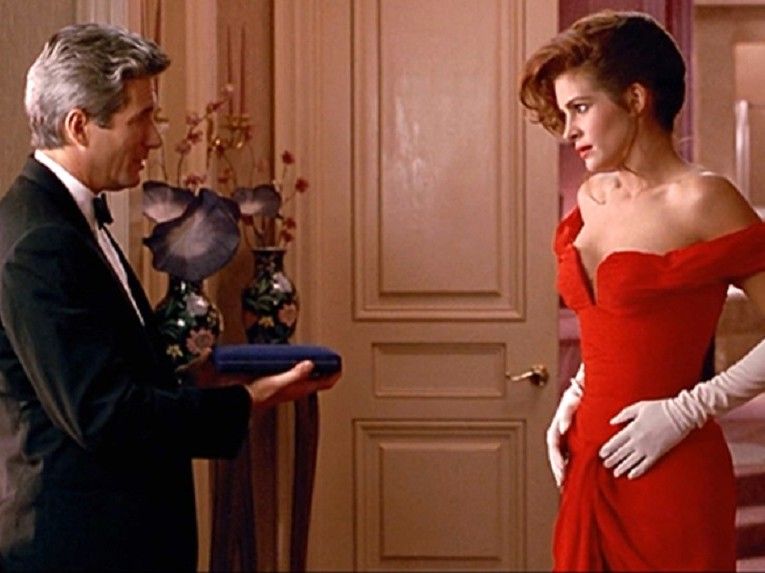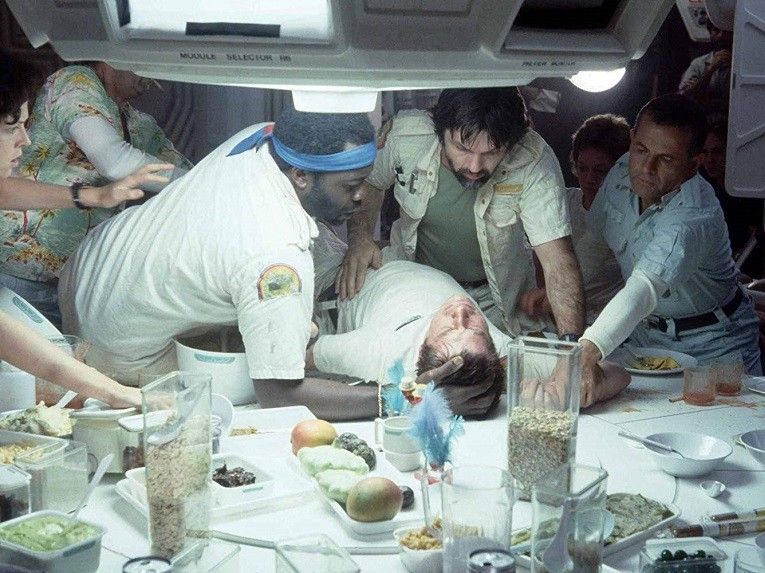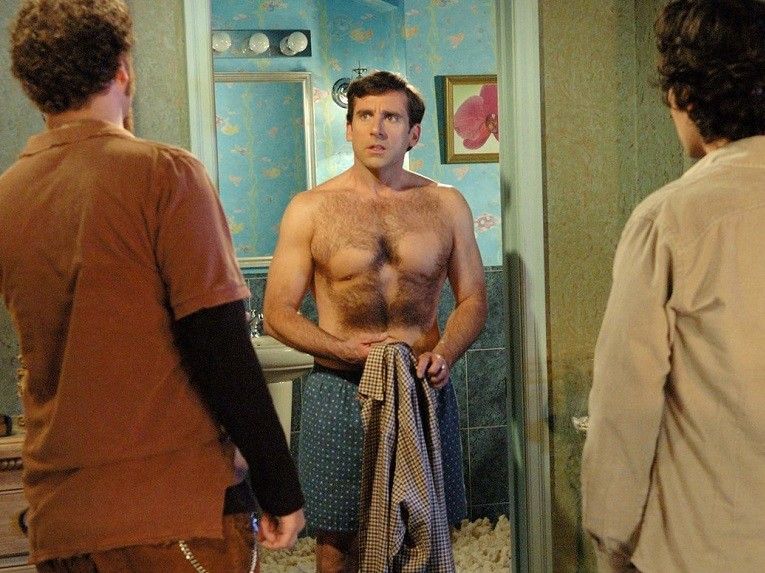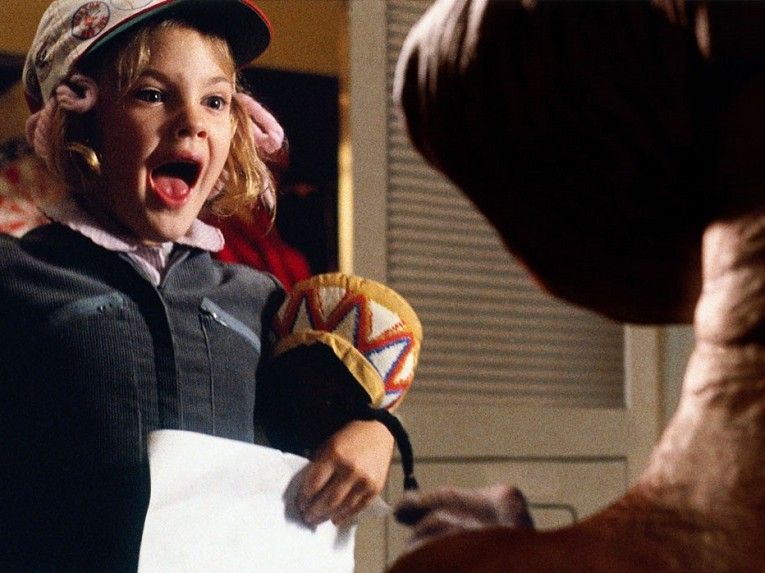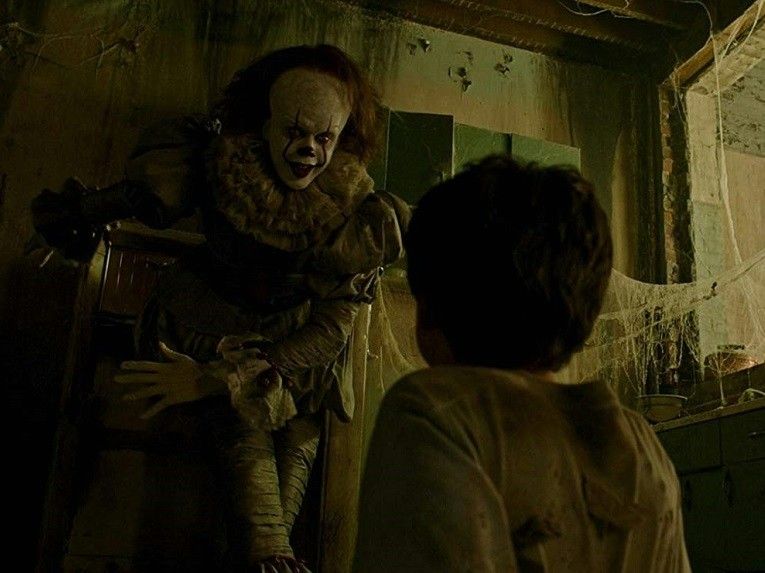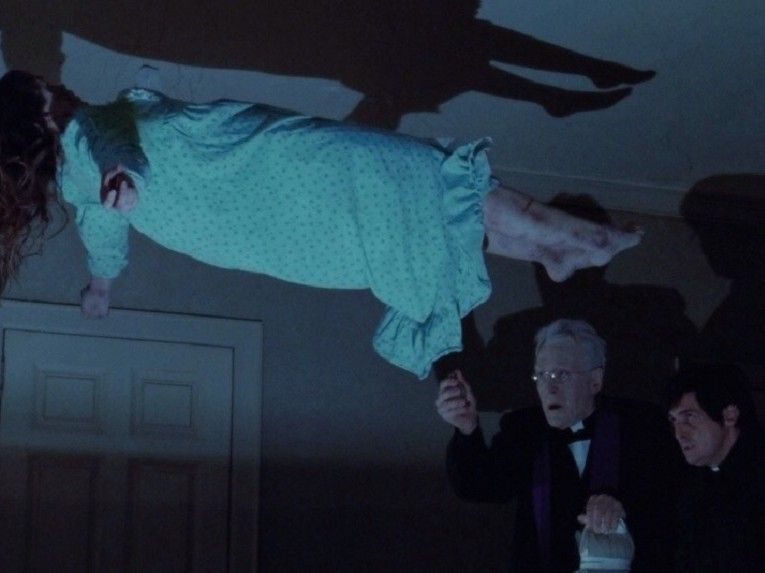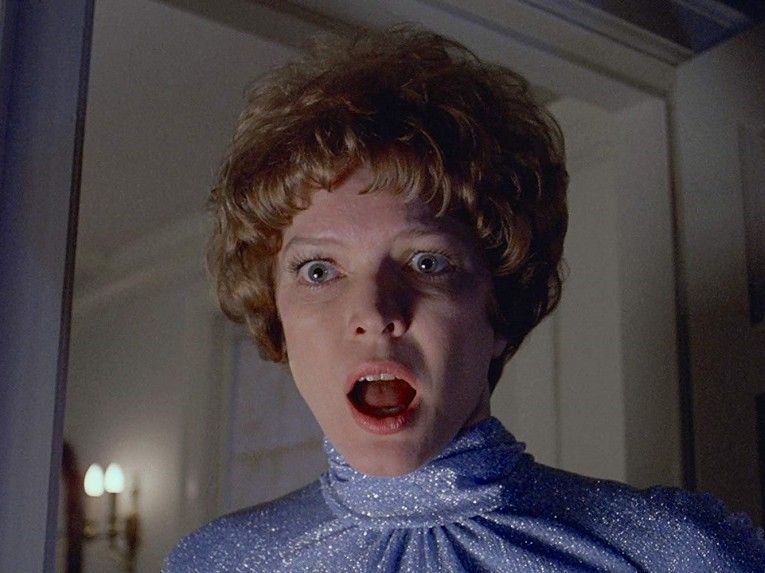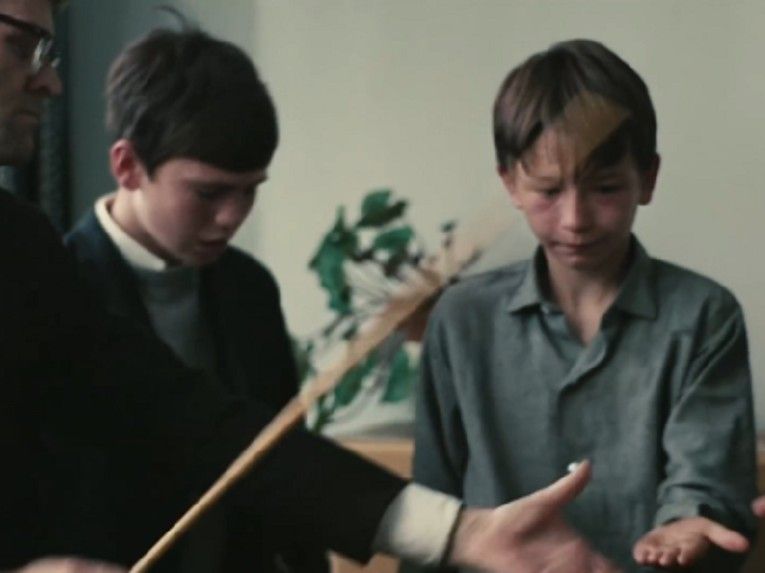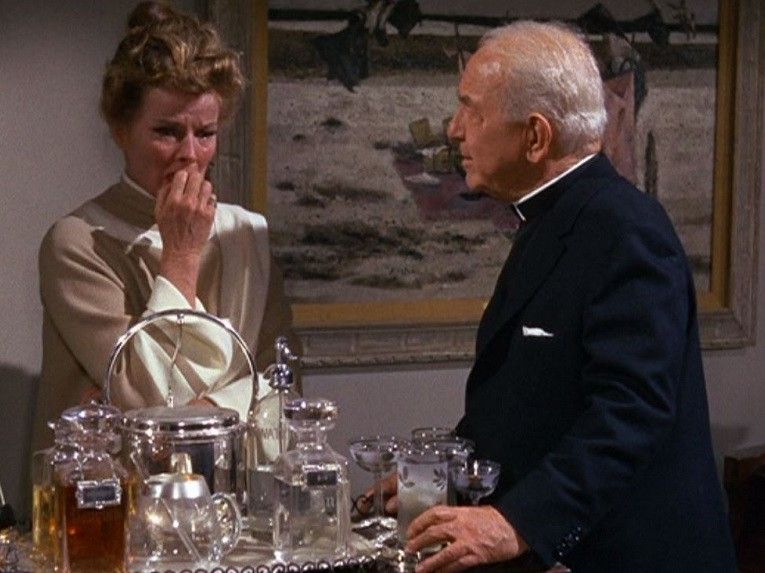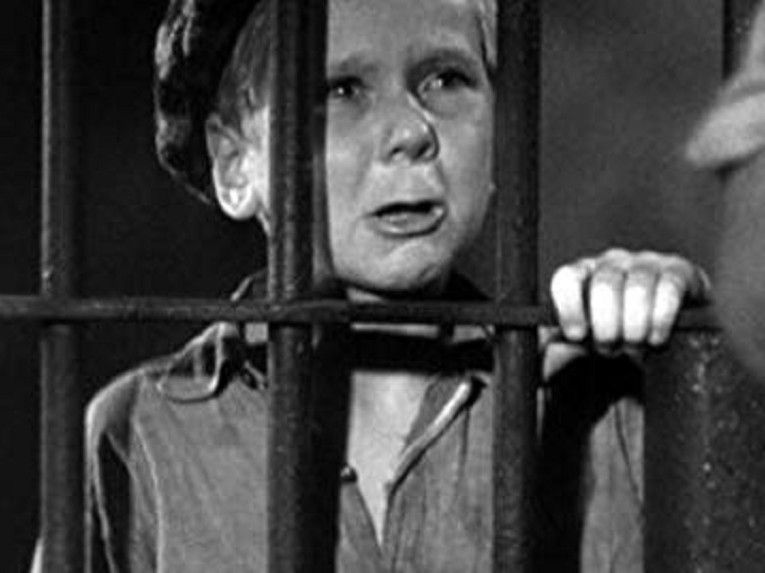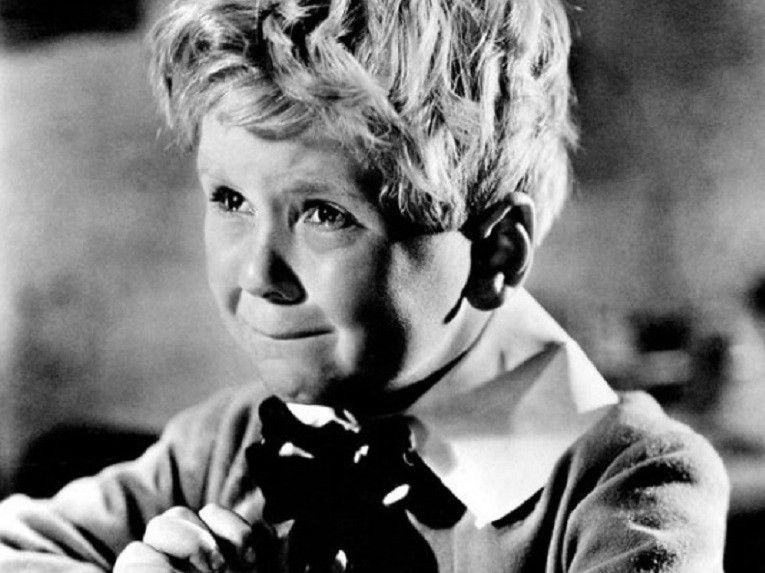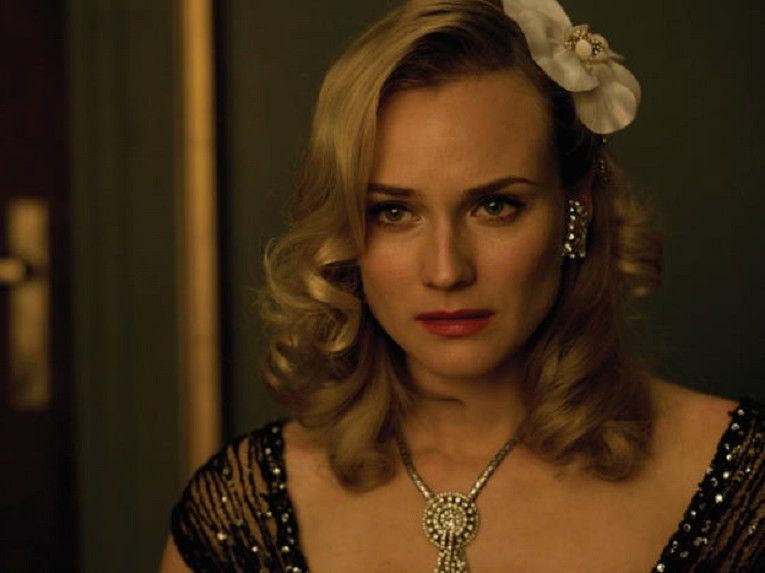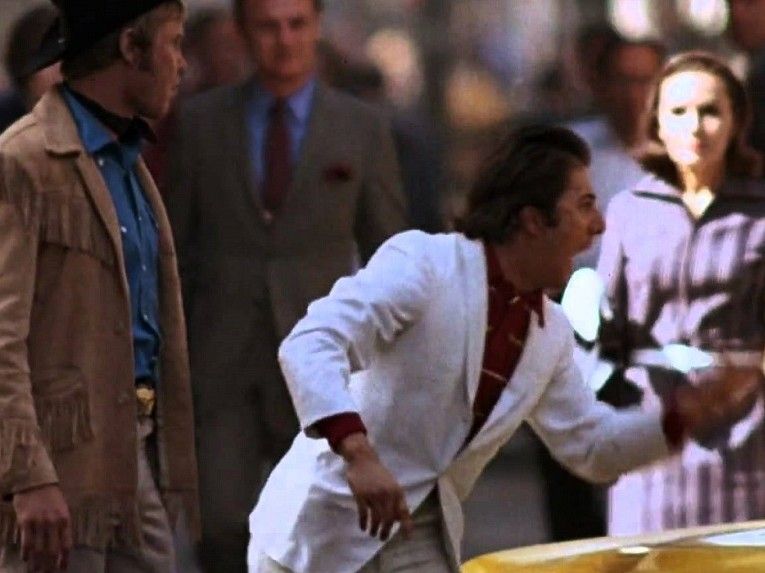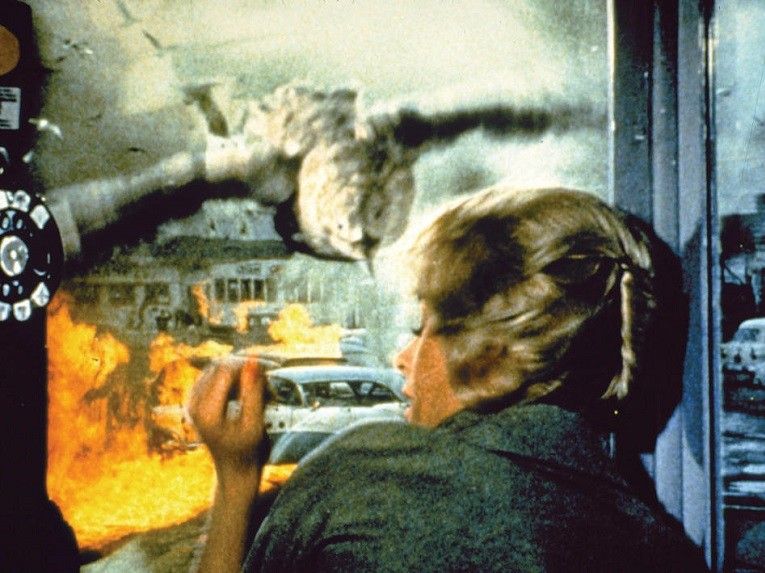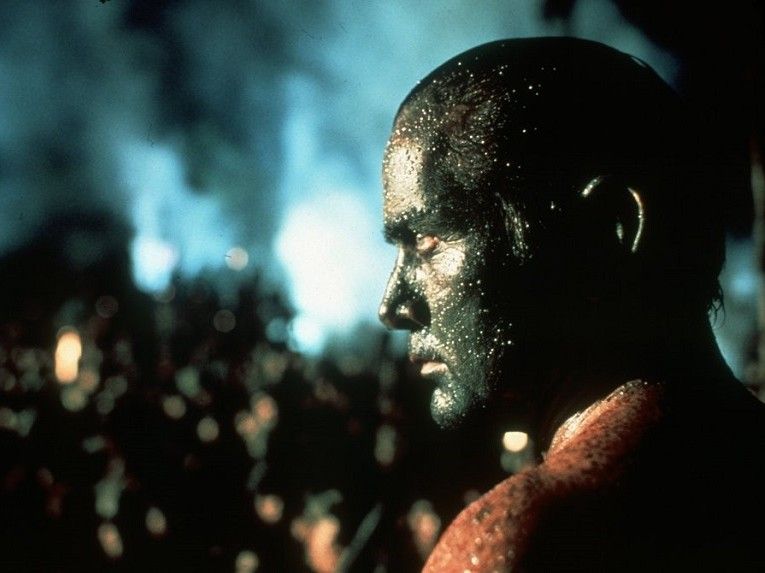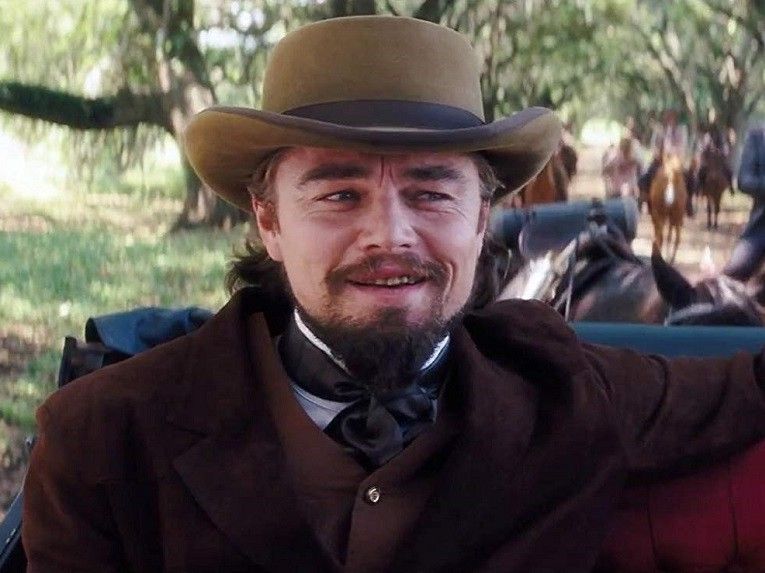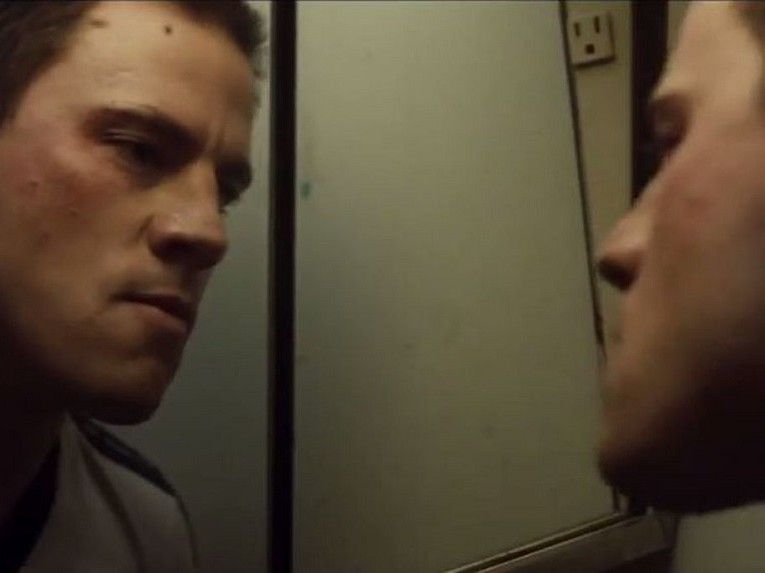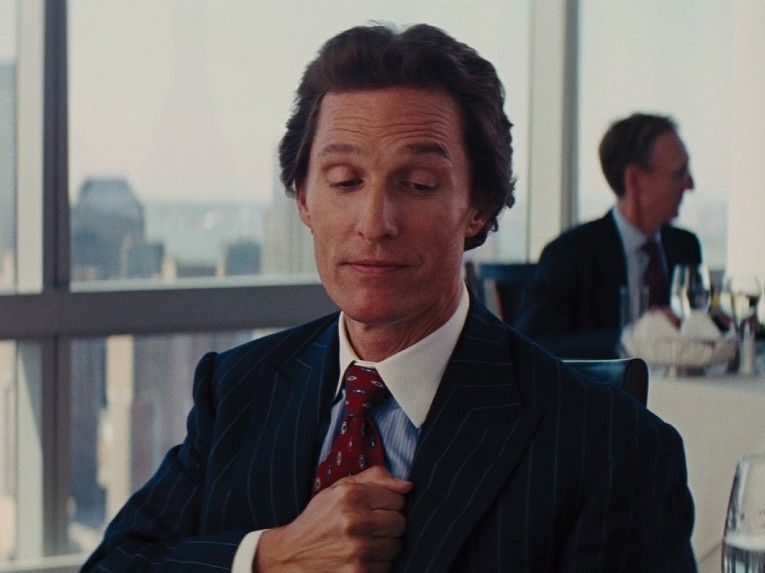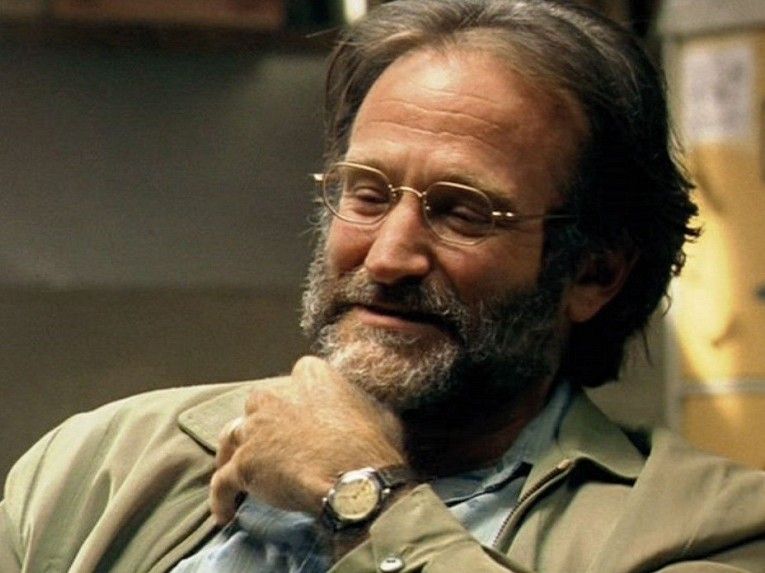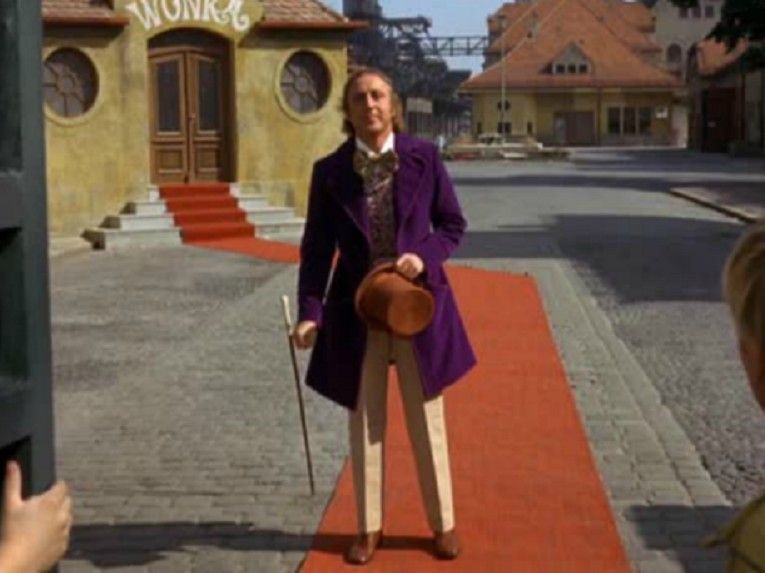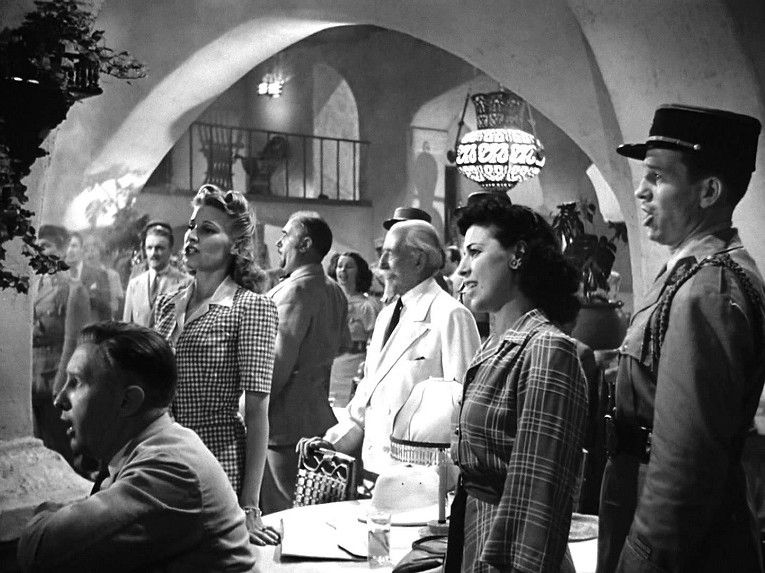Jaws
1975’s Jaws managed to give a whole generation a lasting phobia of a really big fish. There’s a haunting rumor about the film that insists the actress who becomes the first victim of the shark (Susan Backlinie) screamed in real terror due to her ribs being broken by the device yanking her under the water.
While there’s no evidence of this being true, director Steven Spielberg did decide to make it a surprise when the “shark” would “attack,” meaning that her startled, sudden gasp and choke of water was a real response. Also, the line, “We’re gonna need a bigger boat,” was improvised by Roy Scheider.
No people were harmed in making the film, but the same can’t be said of both the real and fake sharks. The red-herring shark killed early in the film was a real shark that had been killed in Florida, and the first robot-jaws they tried out sunk to the bottom of the ocean.
Downfall
Downfall is a 2004 historical drama telling the story of Hitler’s defeat and fall from power. It’s the subject of many memes focused on the pivotal scene in which Hitler learns his military strategies are failing, and they are über-screwed. Though there’s plenty of schadenfreude in this film as we see Hitler and the Nazis meet their doom, there are some moments that elicit real horror.
There’s a scene in which Magda Goebbels, the wife of head-Nazi propagandist Joseph Goebbels, poisons and murders her six children as they wait in the bunker for the Red Army to descend upon them. The actress who portrays Magda Goebbels (Corinna Harfouch) had to repeatedly stop filming, as she broke down crying at the idea of a mother murdering her own children.
The Princess Bride
The Princess Bride is a beloved 1987 cult comedy, starring Cary Elwes as the Dread Pirate Robert/Westley. Westley is subjected to some pretty horrifying treatment in the film, including getting hooked up to some sort of suction-cup life vacuum torture machine, being brought back to life by a decrepit Billy Crystal, but not before getting soundly clonked on the head by the six-fingered man (played by Christopher Guest).
Apparently, they weren’t really selling a realistic K.O., so Elwes suggested that Guest knock him as hard as he could. With a sword. A real metal sword. Elwes writes in his book, As You Wish, “And that's the last thing I remember. I woke up in the hospital.” If there’s anything that separates the great actors from the good, it’s a willingness to endure lasting brain damage to add realism to a movie featuring rodents of unusual size.
The Shining
One of the most influential horror/thrillers of all time, The Shining was helmed by eccentric, anal-retentive, and talented director Stanley Kubrick. Starring Shelley Duvall and Jack Nicholson as a couple tasked with taking care of an empty hotel over the winter, it pulls the viewer into a world of madness, terror, and psychological fracturing. It’s loaded with symbolism, and every detail is masterfully crafted.
The meticulousness with which the film was created had a cost: Shelley Duvall’s wellbeing. Kubrick tormented the actress, making her do relentless takes, while verbally abusing her and dismissing her acting talent. This was intentional, as revealed in The Making of The Shining. Stanley Kubrick’s daughter, Vivian Kubrick, described how her father terrorized Duvall in order to make the insecurity of her character viscerally apparent.
Back to the Future Part III
In Back to the Future Part III, Michael J. Fox’s character Marty gets into some time-travelling shenanigans back during cowboy times. The movie has a scene in which Marty gets strung up on the clock tower, and Michael J. Fox agreed to actually have a rope put around his neck. The (wildly irresponsible) plan was for him to use his hand to keep the noose from tightening around his neck.
Unfortunately, at one point he wasn’t able to get his hand in position, and was actually being strangled. The crew thought he was simply acting the hell out of being hung... until he lost consciousness for half a minute. We're pretty sure there's a Huey Lewis and the Noose joke in there somewhere.
The Lord of the Rings: The Two Towers
In the second part of the trilogy of The Lord of the Rings, Viggo Mortensen’s character Aragorn had to be at times brooding, fierce, and kingly. Mortensen did a great job bringing life to the character, however at one point he went a little too far. In the scene where the remaining Fellowship thinks Pippin and Merry have been killed by orcs, Aragorn kicks a helmet in rage and grief.
He yells out in very convincing pain, which turned out to also be the pain of his toes breaking: he kicked the prop helmet so hard, he smashed his toes (imagine the pain of stubbing your toe on a coffee table or stepping on a Lego, times ten). He decided to use the pain of his mangled foot as fuel for his acting. Too bad he didn’t have one of those big, cushy, prosthetic hobbit feet to protect him.
The Office
In The Office, Jenna Fischer’s character Pam has a complicated relationship with Michael (Steve Carell). He’s a source of frustration for her, but she simultaneously cares about him deeply. So when it comes time for Michael to move on from the small office in Scranton, Pam gives him a moving goodbye (that we can’t hear), but the emotion of their embrace is palpable.
Fischer explains that her raw emotion in this scene is very real, as she’d grown a deep affection for her costar, Carell, and was saying goodbye to him after years working together on the show. According to Fischer, “That was me talking to Steve. I told him all the ways I was going to miss him when he left our show. Those were real tears and a real goodbye.” That’s what she said! For real. And now we’re sad all over again.
The Blair Witch Project
The genius behind The Blair Witch Project was the cinéma vérité style in which it was shot, with jerky, realistic camera movements, and purported “recovered footage” backstory. Most importantly, most of the film was improvised: the actors were given cryptic clues about where they were supposed to go for the next scene, hidden in film canisters that the actors had to find using GPS.
The scene in which they find teeth was a surprise to them, and the teeth used were very real (collected from a dentist). The directors also used inspiration from military training, harassing and chasing the actors and depriving them of food, so they’d be harried, scared, and paranoid.
Pretty Woman
Pretty Woman, the modern-day retelling of Pygmalion, stars Julia Roberts as a sexworker who falls in love with a wealthy businessman played by Richard Gere. Gere’s character attempts to “civilize” Roberts’ character, as part of a bet to see if he can transform her into someone who passes as high-class.
In one scene, he offers her a necklace, and just as she’s about to pick it up, he closes the box as a joke. The laughter in the scene is very real: Gere improvised the prank, and Julia Roberts was truly surprised. Her playful laughter, which made it into virtually every one of the film's trailers, was genuine.
Alien
The most famous scene from the iconic sci-fi-horror movie Alien features that little scamp, the chest-burster. John Hurt’s character is innocently eating some space salad when suddenly he gets a stomach ache. His comrades crowd around him for what turns out to be a wild surprise.
The other actors give some very convincing looks of absolute shock and horror as a nasty, worm-like alien explodes from Hurt's chest, spraying them with blood. Their surprise at the little human-cake-popper was not acting: they were not told about the prop alien and blood explosion, so the camera could catch their real looks of “what the hell just happened?”
The 40-Year-Old Virgin
The 40-Year-Old Virgin, which starred Steve Carell as, well, a 40-year-old virgin, is a comedy that explores the various hijinks that Carell’s not-yet-deflowered character gets into during his quest to pursue a romantic relationship, and his trepidation at reaching the “final frontier.” In one scene, he attempts to get his chest wax, thinking it might make himself more sexually appealing. Rather than going for prop hair or something more sensible, Carell got his chest waxed for real.
For those of you out there who have never tried getting a hairy body part waxed, here’s a detailed description of what it feels like: it’s really, really, really, really, really painful. The agonized yelling and cursing in that scene was real, as was his tender, red, post-epilation chest. At least it was done in the name of showbiz!
E.T. The Extra-Terrestrial
E.T. The Extra-Terrestrial features what is now considered to be an adorable and lovable alien, but when you remove the context of the movie, it is actually quite a horrifying looking little creature. How many of us were gifted an E.T. toy at one point in our lives and kept it forever hidden beneath the bed, where its gaze could not reach us?
Child actress Drew Barrymore certainly felt the same way. In the scene where she first discovered E.T., Barrymore hadn’t been introduced to the E.T. puppet yet. Her surprise and fear is pretty real. Fortunately she worked things out with the E.T. puppet, but not before director Steven Spielberg gave her a good scare.
It (2017)
The 2017 remake of It goes out of its way to portray convincing horror by frightening the juice boxes out of its grade school cast. To ensure that the cast of kids gave realistic expressions of horror as they first discover Pennywise (Bill Skarsgaard), the horrible clown monster, the directors made sure they had no idea what he looked like, and kept Skarsgaard separated from them.
The kids didn’t see images of the clown until they filmed the projector scene. Finn Wolfhard and his fellow actors watched the screen and the clown appear for the first time. Their growing horror and final shock was as real as the audience’s.
The Exorcist
The Exorcist was a shockingly twisted thriller/horror film, with some of the earliest forms of jump-scares. And in order to make sure the actor portraying Father Karras (Jason Miller) got a proper look of revolted horror, the director told him the pea-soup vomit spat up by Linda Blair would strike him in the chest. (And yes, it was really Anderson’s pea soup, mixed with a bit of oatmeal.)
Instead they directed the barf-nozzle right into his eyes, giving a nasty pea-soup surprise to the actor. At least he looks convincingly freaked out (and annoyed) at the demon possessing Regan (Blair).
The Exorcist contd.
The vomit-to-the-eyes wasn’t the only twist the actors had to endure during the filming of The Exorcist. The actress who portrays Regan’s mother (Ellen Burstyn) was to be yanked across the room, by the creepy demon powers possessing her daughter. But they really wanted to get that look of having the rug (and floor) pulled out from under her.
The filmmakers made sure the actually yanking apparatus would be much more violent than the actress requested. After she screamed out in complaint, director William Friedkin said, “Well, it has to look real.” “I know it has to look real but I’m telling you, I could get hurt,” Burstyn said. The director ignored this, and in fact she did get injured during the brutal yank.
Kes
1969’s Kes is a British drama directed by Ken Loach, about the difficult life of a bullied and neglected boy, Billy Casper (portrayed by David Bradley). The boy’s only joy in life is his falconry hobby and his beloved kestrel.
The bleakness of the film is underlined in a scene where a group of schoolboys (including Bradley) are caned by a teacher. Their reactions of startled pain are very real, as Loach has promised they’d cut right before they’d be struck… but instead he kept the cameras rolling as the child actors were, in reality, hit by the cane.
“You can’t imitate that expression, the point at which the cane strikes the hand. So we just caned them, really,” Loach admitted. Also, actor Bradley got another scare when they filmed him running from a real dog that had been released on set (a “trick,” as Bradley described it). Is it ironic, or simply horrifying, that a movie about child abuse involved real child abuse?
Guess Who’s Coming to Dinner
Guess Who’s Coming to Dinner is a 1967 comedy-drama that explores the racism surrounding interracial relationships. A black man and a white woman (played by Sidney Poitier and Katharine Houghton) fall in love and plan to get married. The woman’s parents (Katharine Hepburn and Spencer Tracy), though liberal on paper, are unwilling to accept the relationship.
The movie was particularly emotional for Hepburn, as Tracy, her long-time costar and lover, was in declining health, and she knew he was dying.
Her tears in the final scene where Tracy’s character gives a speech about love were likely real. Tracy died two weeks after filming had ended. Hepburn never watched the completed film, saying it would be too painful to see those last memories of her beloved partner.
The Champ
The Champ is a 1931 sports drama film (not to be confused with the 1979 remake) starring child actor Jackie Cooper as the son of a washed-up heavyweight champion (played by Wallace Beery). It’s a tragedy that required the young actor to muster tears for the camera, but the 9-year-old Cooper couldn’t always cry on cue.
Luckily, there's a sure-fire way to get kids to cry - you do something to punish them fiercely for absolutely no reason. Director King Vidor allegedly pretended to fire the assistant director, whom he believed Cooper was fond of, to get the tears he wanted. See? You can just bully the performance you want out of your child star!
Skippy
The 1931 film Skippy is allegedly a comedy, and by comedy, we mean a movie in which a child’s dog gets held for ransom and then killed. It features famous child star Jackie Cooper, who was finding it difficult to summon the tearful emotion necessary for a pivotal scene. So his uncle, director Norman Taurog, told the child actor he was going to kill his real dog.
Though it turned out to be a fun little “prank” (to traumatize a kid into sobbing for some method-acting gold), Jackie Cooper held lasting resentment against his uncle. Most of us have wacky uncles, but they rarely pretend to kill our dogs all in the name of movie magic.
Inglourious Basterds
Quentin Tarantino does nothing by half-measure, not even when it comes to choking out his own actors. In the scene where Diane Kruger’s character gets choked to death by the reprehensible Nazi played by Christoph Waltz. Tarantino decided that the best way to really sell being choked is to actually be choked. Can’t argue with that logic, but that required Kruger to take one for the team.
She agreed to allow Tarantino himself to choke her, in order to get the red face, bulging blood-vessels and tears that comes with real choking. Though that’s some serious dedication to the role, there was some dubiousness to whether she consented to the act, which she responded on Instagram with, “I would like to say that my work experience with Quentin Tarantino was pure joy. He treated me with utter respect and never abused his power or forced me to do anything I wasn’t comfortable with.”
Midnight Cowboy
In Midnight Cowboy (1969) Dustin Hoffman portrays a conman/hustler who works with a male prostitute, and eventually they become friends. One of the most famous lines from the movie (and perhaps in Hoffman’s acting career) was the cry of, “I’m walkin’ here!” as a taxi nearly collides with him at a crosswalk.
Not only was this line unscripted, but the presence of a taxi was completely unplanned—the taxi had somehow skirted past the blockade for the scene, and intercepted Hoffman unexpectedly. Hoffman’s reaction leaned into the character he was playing (and was likely coupled with very real annoyance at the sudden intrusion of a taxi). The line has become emblematic of the stereotypical frazzled, street-hardened New Yorker.
Fight Club
In Fight Club, Edward Norton and Brad Pitt’s characters share a complicated, close relationship (spoilers: they’re the same person). Tyler Durden (Pitt) evangelizes the benefits of escaping the culture of being mundane and materialistic, by punching your buddies a bunch of times.
Norton’s character hits brad Pitt in the ear, to which Pitt replies, “Why the ear?” His incredulity was real: the line was unscripted, as was Norton boxing Pitt’s ear. The director whispered to Norton just before the scene was shot to go for the ear, rather than the shoulder (as had been planned).
The Birds
Alfred Hitchcock’s famous film The Birds (1963) is an iconic horror film about murderous birds (and we’re not just talking about a group of crows, here). While it sounds silly on paper, Hitchcock managed to make birds scary and suspenseful (take note, Bird Box). Tippi Hedren’s character really runs the bird-gauntlet, getting attacked, pecked at, scraped up, and (probably) pooped on.
In order to really get that expression of “oh dang, am I about to get killed by a bunch of birds?” Hitchcock decided to pull a fun little trick on Hedren: she was told she’d only get “attacked” by fake, animatronic birds. Instead, Hitchcock launched some very real, very frantic birds at Hedren, over and over again. That’s one way to ruffle an actress’s feathers.
Apocalypse Now
Apocalypse Now is a descent into madness, not only that of the infamous Colonel Kurtz (Marlon Brando), but also of the character sent to “terminate” him, Captain Willard (played by Martin Sheen). In one scene, Willard realistically smashes his hand into a glass mirror, an effect Sheen achieved by actually smashing his hand into a glass mirror. This is at least in part due to his real-life state of mind being similar to his PTSD-suffering, alcoholic character.
This is another way of saying that Sheen filmed the movie under a near-constant haze of booze, in particular that memorable scene. He explained to The Guardian, "At the time, I was a drinker. Hell, I was an alcoholic. It was my 36th birthday and I'd been drinking all day.”
Django Unchained
Second on our list of “actors who really wanted to smash their hands into glass,” is good old Leonardo DiCaprio. In Django Unchained, he plays a viciously cruel plantation owner named Calvin Candie. In a scene where he intimidates Broomhilda (Kerry Washington), Candie angrily slaps his palm down on a table. The hand comes up bloody, because it's covered in DiCaprio's actual blood.
DiCaprio was so into the scene that he swung his meathook into the table as hard as he could. Though it was an unplanned accident, he ran with it in the scene, using the bloody hand as a way to show how crazed and determined to be a giant asshole his character was.
Foxcatcher
Looking at Channing Tatum, you might not guess the charming leading man would get so into a role that he would smash his moneymaking face into glass. But you would be wrong. In Foxcatcher, Tatum plays tormented Olympic wrestler Mark Schultz, who is abused by wrestling team owner John E. du Pont (Steve Carell).
In one scene, Schultz’s emotional state becomes so volatile, he smashes his head into a mirror. To make this as realistic as possible Tatum… smashed his head into a mirror. Is it symbolic? Dedication? Stupidity? We’re not sure, but it got the job done, and it's a chillingly memorable scene.
The Wolf of Wall Street
The Wolf of Wall Street is about the cutthroat, slimy, illegal dealings of stockbrokers, featuring Leonardo DiCaprio as their king. In one scene, DiCaprio’s character talks to his boss (and role model as a ruthless businessman), played by Matthew McConaughey. It's a very brief role, but McConaughey makes a meal out of it.
The truly bizarre sequence in which McConaughey’s character beats his chest to rev himself up is an actual acting technique that he uses to prepare for a scene. Rather than cut it out, director Martin Scorsese decided to keep it in the final film, as an iconic scene of the weird posturing in the world of business.
Good Will Hunting
In Good Will Hunting, Matt Damon’s genius character (Will) struggles to live up to his potential due to his abusive upbringing. A therapist (played by Robin Williams) tries to break through Will’s emotional barriers in order to help him heal and realize his self-worth. However, he is unable to convince Will to stop hanging out with so many Afflecks.
In one particularly striking breakthrough session, Williams’ character tells a story about his deceased wife farting in the middle of the night, and how he took the blame to save her the embarrassment. This whole scene was unscripted, and Damon and Williams’ laughter was all a real response to the funny fart story that only Williams could pull off.
Willy Wonka and the Chocolate Factory
Gene Wilder was perfect in his role as a crazed candy tycoon in Willy Wonka and the Chocolate Factory, so much so that we have to wonder whether he actually hated children in his day-to-day life. Many of his scenes and strange, erratic antics were improvised.
For instance, remember Wonka's dramatic first appearance to the kids waiting to tour his chocolate factory? His limp at the beginning was unscripted: the confused, worried reactions of the children and their parents, and surprise when he tumbled only to somersault and jump up, was genuine delight at Wilder’s ad-libbing.
Casablanca
Casablanca (1942) was still being filmed during WWII. As the plot is centered around the war, it was highly emotional subject matter for both the cast and contemporary audiences. In one of the most powerful scenes, the French and Allied occupants of Rick’s (Humphrey Bogart) nightclub attempt to drown out the music of some rowdy Nazis by singing La Marseillaise, the national anthem of France.
The tears and emotion of the actors as they sang was raw and palpable, due to the reality of the war and the uncertainty of the fate of France, which was at the time occupied by the Nazis. In part this film is so iconic due to the genuine fears and hopes of the actors.

